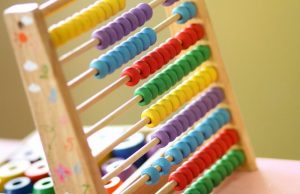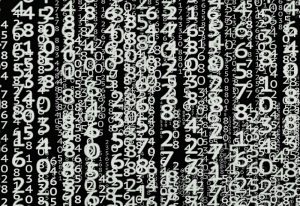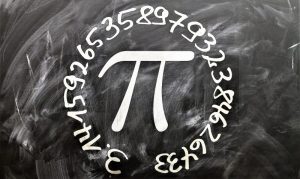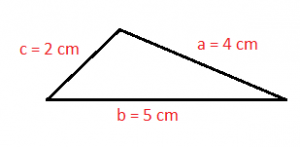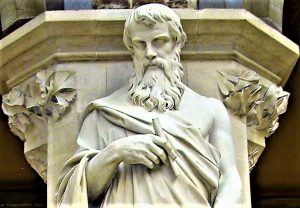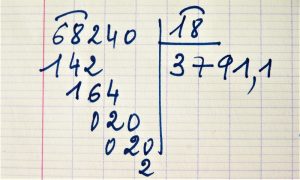Prime numbers
Mathematics since ancient times has evolved and created new developments to improve its functioning and ease when we put it into practice. Prime numbers are nothing more than the application of algorithms to the composition of compound numbers, since they are based on the findings of two divisors of the same number.

Related topics
Algebraic numbers, complex numbers, integers, irrational numbers, rational numbers, real numbers
What are prime numbers?
According to the mathematician Eratosthenes of Cyrene, prime numbers do not follow a precise logic, rather they are a product of the division in which there are only two divisors, the same number and the number (1), as he once said: "it is easier to multiply, but to find the divisor is complex".
Definition
It is a number that is described as a natural number and are greater than (1), since it leads to only be divided between the same and the unit (1), they are based on compound numbers, since they are governed by the division of the same.
Characteristics
Among the characteristics that define these numbers as unique, are:
- To be able to be divided between only two divisors.
- The result of the division is even.
- There are more prime numbers between 1 and 100 than between 101 and 200.
- All prime numbers, except (2), are odd numbers.
- is not a prime number, because it has only one divisor that is itself.
- Numbers that acquire more than two divisors are called compound numbers
History
The course of the prime numbers has happened along the evolution of the human being, passing through three historical epochs, of which they stand out:
The Pre Hellenic East
The notches in the Ishango bone, which dates back more than 20,000 years (prior to the first appearance of writing) and was found by archaeologist Jean de Heinzelin de Braucourt, it describe the isolation of four prime numbers: 11, 13, 17 and 19.
Some archaeologists interpret this as the first finding of the existence of prime numbers. That said, there are very few discoveries that allow us to discern the knowledge that man really had at that time.
Numerous dry clay tablets attributed to the civilizations that arose in Mesopotamia during the II millennium B.C. show the resolution of arithmetic problems and attest to the facts of the time.
The calculations required to know the inverts of the natural ones, that also have been found in tablets, the sexagesimal system was used by Babylonians to write these numbers.
Babylonians’ mathematical knowledge needed a solid understanding of multiplication, division, and factorization of naturals.
Ancient Greece
The first proof of knowledge of prime numbers dates back to about 300 B.C. and is found in the Elements of Euclid (volumes VII to IX). Euclid defines prime numbers, he demonstrates that there are infinites of them, he expresses the maximum common divisor and the minimum common multiple and provides a method for finding them, today it is known as the Euclid algorithm. The Elements also possess the fundamental arithmetic theorem and the way to construct a perfect number from a Mersenne prime number.
The Eratosthenes sieve, made by Eratosthenes of Cyrene, is a simple method of finding prime numbers. Today, the largest prime numbers found, with the help of computers, employ other faster and more complex algorithms.
Since the Renaissance
After Greek mathematics, there was little progress in the study of prime numbers until the 17th century. In 1640; Pierre de Fermat established the small theorem of Fermat, later demonstrated by Leibniz and Euler.
It is possible that much earlier a special case of such a theorem was known in China.
In 1859, about the zeta function, they described the way that would lead to the demonstration of the theorem of prime numbers. It was then that Hadamard and De la Vallée-Poussin, each separately, gave appearance to this scheme and managed to present the theorem in 1896.
During the 19th century algorithms were created to know if a number is prime or not, fully factoring the next number (p+1) or the previous number (p-1). Within the first case is the Lucas-Lehmer test, developed from 1856.
Within the second case is the Pépin test for Fermat numbers in 1877. The general case of primality test, when the immediately preceding number is fully factored, is called Lucas test.
Starting in the 1970s several researchers discovered algorithms to calculate whether a number is prime or not with sub-exponential complexity, which allows testing on numbers of thousands of digits. Even the complex structuring of algorithms in the most powerful machines of our days for the search and ease of finding the prime numbers.
What are primer numbers for?
Nowadays, prime numbers have served us in computing, since with them we can execute complex security codes, pattern keys, algorithm decryption and complex calculations.
How to find prime numbers
They can be found with factorization of both a natural and a complex number, where only by executing a division, two divisors can be found, that is, on the one hand, to divide with itself and on the other, by the unit (1); the result of this division has to be an even number.
How it differs from compound numbers
The most characteristic difference is that when dividing a prime number, it can only opt for two divisors and numbers composed by the division of numbers that are greater than (1), i.e., natural numbers and the division that carries with it.
Even Prime Numbers
In the infinitude of numbers and the art of mathematics, only in prime numbers, the number two (2) is authentically an even number and a prime number at the same time.
List of prime numbers from 1 to 2000
Up to 50
2, 3, 5, 7, 11, 13, 17, 19, 23, 29, 31, 37, 41, 43, 47
Up to 100
53, 59, 61, 67, 71, 73, 79, 83, 89, 97
Up to 150
101, 103, 107, 109, 113, 127, 131, 137, 139, 149
Up to 200
151, 157, 163, 167, 173, 179, 181, 191, 193, 197, 199
Up to 300
211, 223, 227, 229, 233, 239, 241, 251, 257, 263, 269, 271, 277, 281, 283, 293
Up to 500
307, 311, 313, 317, 331, 337, 347, 349, 353, 359, 367, 373, 379, 383, 389, 397, 401, 409, 419, 421, 431, 433, 439, 443, 449, 457, 461, 463, 467, 479, 487, 491, 499
Up to 1 000
503, 509, 521, 523, 541, 547, 557, 563, 569, 571, 577, 587, 593, 599, 601, 607, 613, 617, 619, 631, 641, 643, 647, 653, 659, 661, 673, 677, 683, 691, 701, 709, 719, 727, 733, 739, 743, 751, 757, 761, 769, 773, 787, 797, 809, 811, 821, 823, 827, 829, 839, 853, 857, 859, 863, 877, 881, 883, 887, 907, 911, 919, 929, 937, 941, 947, 953, 967, 971, 977, 983, 991, 997
Up to 2 000
1009, 1013, 1019, 1021, 1031, 1033, 1039, 1049, 1051, 1061, 1063, 1069, 1087, 1091, 1093, 1097, 1103, 1109, 1117, 1123, 1129, 1151, 1153, 1163, 1171, 1181, 1187, 1193, 1201, 1213, 1217, 1223, 1229, 1231 1237, 1249, 1259, 1277, 1279, 1283, 1289, 1291, 1297, 1301, 1303, 1307, 1319, 1321, 1327, 1361, 1367, 1373, 1381, 1399, 1409, 1423, 1427, 1429, 1433, 1439, 1447, 1451, 1453, 1459, 1471, 1481, 1483, 1487, 1489, 1493, 1499, 1511, 1523, 1531, 1543, 1549, 1553, 1559, 1567, 1571, 1579, 1583, 1597, 1601, 1607, 1609, 1613, 1619, 1621, 1627, 1637, 1657, 1663, 1667, 1669, 1693, 1697, 1699, 1709, 1721, 1723, 1733, 1741, 1747, 1753, 1759, 1777, 1783, 1787, 1789, 1801, 1811, 1823, 1831, 1847, 1861, 1867, 1871, 1873, 1877, 1879, 1889, 1901, 1907, 1913, 1931, 1933, 1949, 1951, 1973, 1979, 1987, 1993, 1997, 1999
Other examples
Subtraction of prime numbers:
13-5 = 8 (number compounds)
13-2= 11 (prime number)
23-2 = 21 (composite number)
37-7 = 30 (composite number)
43-2 = 41 (prime number)
Multiplication of prime numbers:
2 x 3 = 6
11 x 3 = 33
29 x 5 = 145
17 x 7 = 119
13 x 11=143
Division of prime numbers:
11 / 11 = 1
11 / 1 = 11
89 / 89 = 1
89 / 1 = 89
41 / 41 = 1
41 / 1 = 41
The sum of two prime numbers is a prime number. It can be the result of a compound number or a prime number at the time of executing it, one of the most pertinent examples are:
2, 3, 5, 7, 11, 13, 17, 19, 23, 29, 31, 37, 41, 43, 47, 53, 59, 61, 67, 71, 73, 79, 83, 89, 97,101, 103, 107, 109, 113, 127, 131, 137, 139, 149, 151
11 + 2 = 13 (prime number)
3 + 2 = 5 (prime number)
7 + 2 = 9 (composite number)
13 + 5 = 18 (composite number)
5 + 2 = 7 (prime number)
How to cite this article?
Briceño V., Gabriela. (2019). Prime numbers. Recovered on 23 February, 2024, de Euston96: https://www.euston96.com/en/prime-numbers/



